Clancy Tucker's Blog, page 158
March 15, 2018
16 March 2018 - FACTS ABOUT THE AUTOMATED TELLER MACHINE – ATM

FACTS ABOUT THE AUTOMATED TELLER MACHINE- ATM -
G'day folks,
Welcome to some background information on something that has become a part of our daily lives.
The automated teller machine, or ATM, is such a complicated piece of technology that it does not have a single inventor. Instead, the ATMs we use today are an amalgam of several different inventions. Some of these proto-ATMs dispensed cash but did not accept deposits, for example, while others accepted deposits but did not dispense cash. Today’s ATMs are sophisticated computers that can do almost anything a human bank teller can, and have ushered in a new era of self-service in banking.
The Early Days of Automated Banking
Many experts believe that the first automated banking machine was the creation of an American inventor and businessman named Luther Simjian. Simjian held patents on all kinds of things–including an army flight simulator, a color x-ray machine, a self-focusing camera, an exercise bicycle and a teleprompter–but he was best known for his work on the Bankograph, a machine that could accept cash or check deposits at any hour of the day or night.
In 1960, Simjian managed to persuade a New York City bank to take a few of his automatic-deposit machines. So that customers could trust that they would see their money again, there was a microfilm camera inside the Bankograph that took a snapshot of every deposit. Customers received a copy of the photo as their receipt. Still, the Bankograph did not catch on. “The only people using the machines were prostitutes and gamblers who didn’t want to deal with tellers face to face,” Simjian explained, and there were not enough of them to make the machines a worthwhile investment.

The Advent of the ATM
By the end of the 1960s, however, times were changing, and a broader segment of the population–more comfortable with the idea of self-service and more willing to trust unfamiliar technologies–was willing to give automated banking a try.
In 1967, a Scottish inventor named John Shepherd-Barron was sitting in the bathtub when he had a flash of genius: If vending machines could dispense chocolate bars, why couldn’t they dispense cash? Barclays, a London bank, loved the idea, and Shepherd-Barron’s first ATM was installed in a branch on Enfield High Street not long afterward. Unlike modern ATMs, Shepherd-Barron’s did not use plastic cards. Instead, it used paper vouchers printed with radioactive ink so that the machine could read them. The customer entered an identification code and took her cash–a maximum of £10 at a time.
The first automated banking machine in the U.S. was devised by a Dallas engineer and former professional baseball player named Donald Wetzel. Wetzel’s machine used plastic cards like the ones we use today. (Instead of radioactive ink, the cards stored account information in magnetic strips.) In September 1969, a Chemical Bank branch on Long Island installed the first of Wetzel’s machines.

The Spread of ATMs
By 1970, dozens of U.S. banks had jumped on the ATM bandwagon. To introduce this new machine to consumers, banks used all kinds of advertising tricks. For example, to get the attention of female customers, a bank in Columbus, Ohio, sponsored a six-hour Paul Newman movie marathon on a local television channel. Every 25 minutes during the movies, commercials for the bank touted the advantages of its new cash-dispensing machine.
However, it took a corporate gamble and a blizzard for the ATM to win the confidence of American consumers. In 1977, the chairman of Citibank took a huge risk, spending more than $100 million to install ATMs all over New York City. That investment paid off the following January when a huge blizzard hit New York, dumping 17 inches of snow on the city. Banks were closed for days; meanwhile, ATM use increased by 20 percent. Within days, Citibank had launched its by-now-familiar “The Citi Never Sleeps” ad campaign. Posters and billboards showed customers trudging through snow to get to Citibank ATMs.
After that, almost every one of the country’s banks followed Citi’s lead. The era of the ATM was underway.

ATMs Today Today, there are almost 2 million ATMs around the globe. Although use of the machines has declined in recent years, likely because more people make purchases using credit and debit cards instead of cash, the ATM continues to have a place in modern culture. Today’s machines sell everything from airline tickets to movie tickets to medicine.

Clancy's comment: Ah, the hole in the wall.
I'm ...
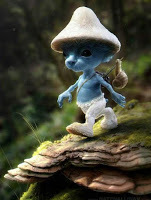

Published on March 15, 2018 14:21
March 14, 2018
15 March 2018 - PRESIDENT BARACK HUSSEIN OBAMA
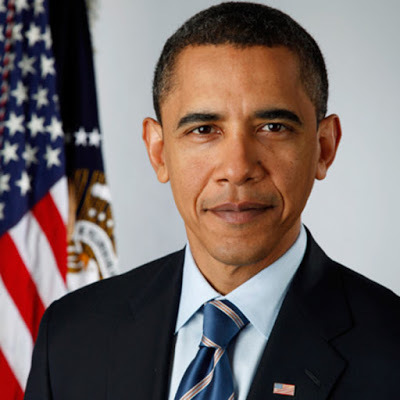
PRESIDENT BARACK HUSSEIN OBAMA
G'day folks,
Welcome to some background on a man who rose to the loftiest of positions. On November 4, 2008, Senator Barack Obama of Illinois was elected president of the United States over Senator John McCain of Arizona. Obama became the 44th president, and the first African American to be elected to that office. He was subsequently elected to a second term over former Massachusetts governor Mitt Romney.
Early life
Obama’s father, also named Barack Hussein Obama, grew up in a small village in Nyanza Province, Kenya, as a member of the Luo ethnicity. He won a scholarship to study economics at the University of Hawaii, where he met and married Ann Dunham, a white woman from Wichita, Kansas, whose father had worked on oil rigs during the Great Depression and fought with the U.S. Army in World War IIbefore moving his family to Hawaii in 1959. Barack and Ann’s son, Barack Hussein Obama Jr., was born in Honolulu on August 4, 1961.
Obama’s parents later separated, and Barack Sr. went back to Kenya; he would see his son only once more before dying in a car accident in 1982. After remarrying an Indonesian man, Lolo Soetoro, Ann moved with her young son to Jakarta in the late 1960s, where she worked at the U.S. embassy. In 1970, Obama returned to Hawaii to live with his maternal grandparents. He attended the Punahou School, an elite private school where, as he wrote in his 1995 memoir, Dreams from My Father, he first began to understand the tensions inherent in his mixed racial background. After two years at Occidental College in Los Angeles, he transferred to Columbia University in New York City, from which he graduated in 1983 with a degree in political science.
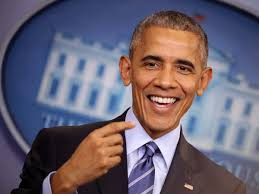
Pre-Election Career
After a two-year stint working in corporate research and at the New York Public Interest Research Group (NYPIRG) in New York City, Obama moved to Chicago, where he took a job as a community organizer with a church-based group, the Developing Communities Project. For the next several years, he worked with low-income residents in Chicago’s Roseland community and the Altgeld Gardens public housing development on the city’s largely black South Side. Obama would later call the experience “the best education I ever got, better than anything I got at Harvard Law School,” the prestigious institution he entered in 1988.
In 1996, Obama officially launched his own political career, winning election to the Illinois State Senate as a Democrat from the South Side neighborhood of Hyde Park. Despite tight Republican control during his years in the state senate, Obama was able to build support among both Democrats and Republicans in drafting legislation on ethics and health care reform. He helped create a state earned-income tax credit that benefited the working poor, promoted subsidies for early childhood education programs and worked with law enforcement officials to require the videotaping of interrogations and confessions in all capital cases.
Re-elected in 1998 and again in 2002, Obama also ran unsuccessfully in the 2000 Democratic primary for the U. S. House of Representatives seat held by the popular four-term incumbent Bobby Rush. As a state senator, Obama notably went on record as an early opponent of President George W. Bush’s push to war with Iraq. During a rally at Chicago’s Federal Plaza in October 2002, he spoke against a resolution authorizing the use of force against Iraq: “I am not opposed to all wars. I’m opposed to dumb wars…I know that even a successful war against Iraq will require a U. S. occupation of undetermined length, at undetermined cost, with undetermined consequences.”
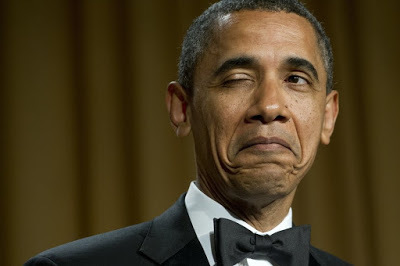
When Republican Peter Fitzgerald announced that he would vacate his U.S. Senate seat in 2004 after only one term, Obama decided to run. He won 52 percent of the vote in the Democratic primary, defeating both multimillionaire businessman Blair Hull and Illinois Comptroller Daniel Hynes. After his original Republican opponent in the general election, Jack Ryan, withdrew from the race, the former presidential candidate Alan Keyes stepped in. That July, Obama gave the keynote speech at the 2004 Democratic National Convention in Boston, shooting to national prominence with his eloquent call for unity among “red” (Republican) and “blue” (Democratic) states.
In November 2004, Illinois delivered 70 percent of its votes to Obama (versus Keyes’ 27 percent), sending him to Washington as only the third African American elected to the U.S. Senate since Reconstruction. During his tenure, Obama notably focused on issues of nuclear non-proliferation and the health threat posed by avian flu. With Republican Senator Tom Coburn of Oklahoma, he created a Web site that tracks all federal spending, aimed at rebuilding citizens’ trust in government. He partnered with another Republican, Senator Richard Lugar of Indiana, on a bill that expanded efforts to destroy weapons of mass destruction in Eastern Europe and Russia. In August 2006, Obama traveled to Kenya, where thousands of people lined the streets to welcome him. He published his second book, The Audacity of Hope, in October 2006.
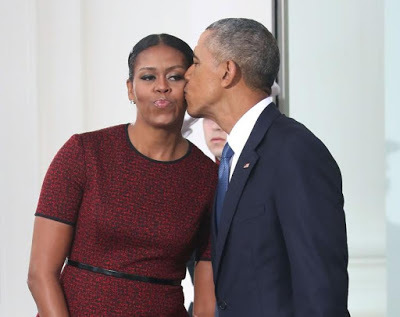
2008 Presidential Campaign
On February 10, 2007, Obama formally announced his candidacy for president of the United States. A victory in the Iowa primary made him a viable challenger to the early frontrunner, the former first lady and current New York Senator Hillary Clinton, whom he outlasted in a grueling primary campaign to claim the Democratic nomination in early June 2008. Obama chose as his running mate Joseph R. Biden Jr. Biden had been a U.S. senator from Delawaresince 1972, was a one-time Democratic candidate for president and served as chairman of the Senate Foreign Relations Committee. Obama’s opponent was long-time ArizonaSenator John S. McCain, a Vietnam veteran and former prisoner-of-war, who chose AlaskaGovernor Sarah Palin as his running mate. If elected, Palin would have been the nation’s first-ever female vice-president.
As in the primaries, Obama’s campaign worked to build support at the grassroots level and used what supporters saw as the candidate’s natural charisma, unusual life story and inspiring message of hope and change to draw impressive crowds to Obama’s public appearances, both in the U.S. and on a campaign trip abroad. They worked to bring new voters–many of them young or black, both demographics they believed favored Obama–to become involved in the election.
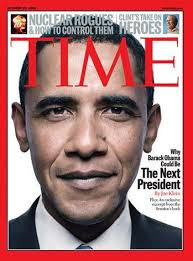
A crushing financial crisis in the months leading up to the election shifted the nation’s focus to economic issues, and both Obama and McCain worked to show they had the best plan for economic improvement. With several weeks remaining, most polls showed Obama as the frontrunner. Sadly, Obama’s maternal grandmother, Madelyn Dunham, died after a battle with cancer on November 3, the day before voters went to the polls. She had been a tremendously influential force in her grandson’s life and had diligently followed his historic run for office from her home in Honolulu.
On November 4, lines at polling stations around the nation heralded a historic turnout and resulted in a Democratic victory, with Obama capturing some Republican strongholds (Virginia, Indiana) and key battleground states (Florida, Ohio) that had been won by Republicans in recent elections. Taking the stage in Chicago’s Grant Park with Michelle and their two young daughters, Malia and Sasha, Obama acknowledged the historic nature of his win while reflecting on the serious challenges that lay ahead. “The road ahead will be long, our climb will be steep. We may not get there in one year or even one term, but America, I have never been more hopeful than I am tonight that we will get there. I promise you, we as a people will get there.”

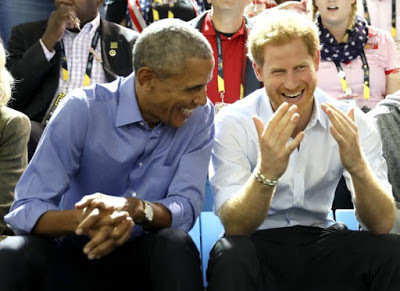
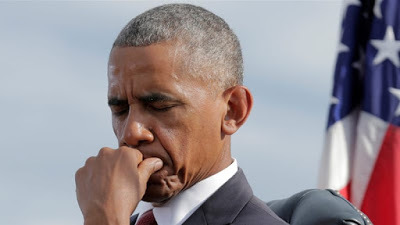
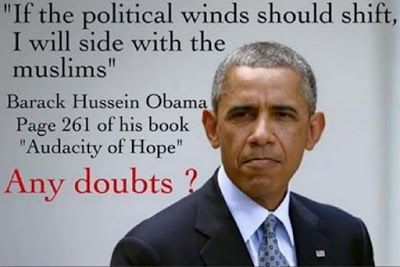


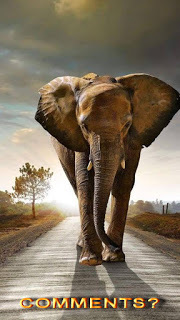
Clancy's comment. This man and his wife would have to be two of the best stand-up speakers I've ever heard.
I'm ...


Published on March 14, 2018 13:15
March 13, 2018
14 March 2018 - SOME GREAT QUOTES TO READ

SOME GREAT QUOTES TO READ
G'day folks,
Welcome to some more wise words from folks around the globe.













DEFINITELY MY PLAN ...

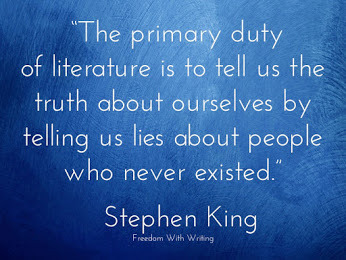


Clancy's comment: Yep, all worth reading, eh?
I'm ...


Published on March 13, 2018 13:18
March 12, 2018
13 March 2018 - THE WAVE HILL 'WALK-OFF'
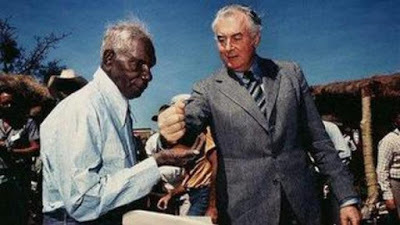
THE WAVE HILL 'WALK-OFF'
G'day folks,
Here is a brief snippet concerning a major revolt by Aborigines in Australia. This very action is mentioned in one of my books - A DROVER'S BLANKET.
Background to the 'walk-off'
Wave Hill Station is located approximately 600 kilometres south of Darwin in the Northern Territory. Vesteys, a British pastoral company which ran the cattle station, employed local Aboriginal people, mostly Gurindji. Working and living conditions for Aboriginal people were very poor. The wages of Aboriginal workers generally were controlled and not equal to those paid to non-Aboriginal employees.
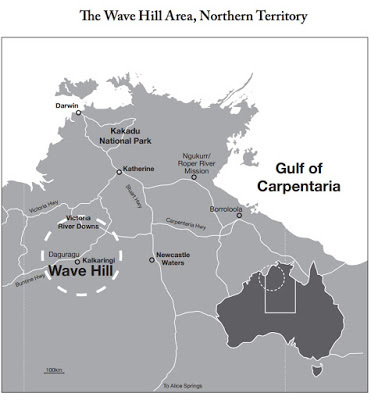
An attempt to introduce equal wages for Aboriginal workers was made in 1965, but in March 1966 the Conciliation and Arbitration Commission decided to delay until 1968 the payment of award wages to male Aboriginal workers in the cattle industry.
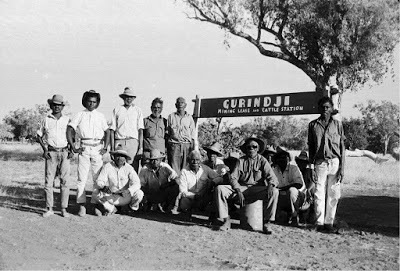
In August 1966, Vincent Lingiari, a Gurindji spokesman, led a walk-off of 200 Aboriginal stockmen, house servants, and their families from Wave Hill as a protest against the work and pay conditions. The strike was part of a widespread campaign begun by workers on Brunette Downs Station and supported by non-Indigenous people, including unionists and the author Frank Hardy.
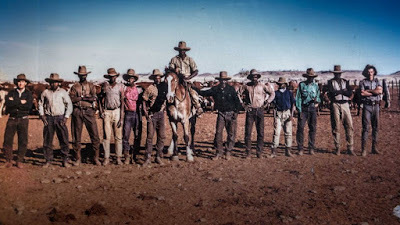
The protesters camped at Wattie Creek (Daguragu) and sought the return of some of their traditional lands to develop a cattle station. They petitioned the Governor-General in 1967, and leaders toured Australia to raise awareness about their cause. In 1972, Prime Minister Whitlam announced that funds would be made available for the purchase of properties that were not on reserves, and Lord Vestey offered to surrender 90 square kilometres to the Gurindji people.
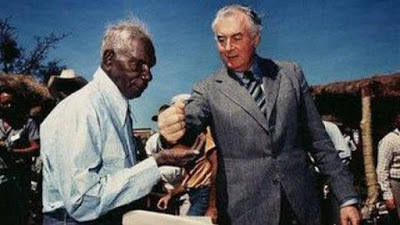
Daguragu was acquired by the Aboriginal Land Fund Commission and, on 16 August 1975 at Daguragu, Prime Minister Whitlam transferred leasehold title to the Gurindji, symbolically handing soil to Vincent Lingiari.
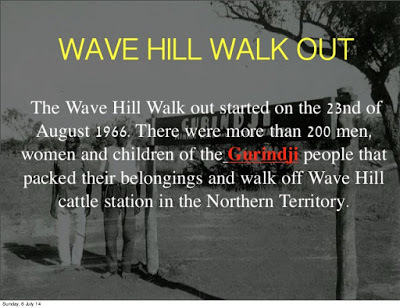
The Gurindji campaign was an important influence on the events leading to passing the Aboriginal Land Rights Act (Northern Territory) 1976.
The Central Land Council applied on behalf of the Gurindji under the Aboriginal Land Rights (Northern Territory) Act 1976 for traditional land comprising the Daguragu pastoral lease and some adjacent un-alienated Crown land. In 1981 the Aboriginal Land Commissioner recommended that the land claim should be granted. The claim relating to the South West Corner was granted in 1985.

Clancy's comment: Go, Vincent Lingiari! Love ya work!

Now, here is a snippet from my book, A Drover's Blanket, where the main character, Smokey Danson, addresses the Aborigines at Wattie Creek. He's the only white man present, but his best mate, Magic Billie, an Aboriginal drover he met in 1910, is there also.
I choked up every time I revised this section of my manuscript. It's powerful stuff.
Voice of BBC commentator:
‘Here we are. We’re at Wattie Creek in Australia’s Northern Territory, a place the Aborigines call Daguragu. It’s a sacred site for the Ngarinman, Bilinara, Warlpiri, Mudbara and Gurindji people. Something unusual is happening today. We’ve heard a whisper that Aboriginal drovers and their families are about to be addressed by a man who’s supported their seven-year battle with the owners of Wave Hill Station. He’s a white man, a station owner from New South Wales … The first white man to step foot in Wattie Creek since the strike began.’
‘Vincent Lingiari, the leader of the walk off, is about to address the stockmen, house servants and their families. Don’t forget. This dispute is not only about work and living conditions. The blacks also want the return of their traditional land. Now, we’ll hear from the speaker. Here is Vincent Lingiari.’
VINCENT LINGIARI
‘I want ya listen to man come long way to support us. He white fella … But he good fella. His name Smokey.’
SMOKEY 'GUN' DANSON
‘Thanks, Vince. G’day, folks. My name’s Smokey Danson, but most folks call me 'Gun' Danson. I own a station in New South Wales and have come here in friendship. Well, I don’t really own my station … You do, but my family has been taking care of it since 1848. It’s a beautiful piece of dirt we call Wiralee Station.’
Smokey stopped speaking when a few people clapped. He offered the crowd a wry smile and slowly raised his hand. ‘Folks, I want to introduce you to my brother, Billie. I call him Magic Billie because he taught me lots about your magic land. He taught me how to find water in a drought, to respect the animals and birds, and to love the earth.’ Magic Billie stepped forward and stood next to Smokey. When he smiled, his white teeth shone brightly against his dark skin. Smokey continued to speak. ‘I met this bloke when I was taking our mob up the long paddock in 1910 during the big drought. He was a skinny bloke then … And he’s a skinny bloke now,’ said Smokey with a cheeky grin. The crowd laughed at his comment.
Smokey draped an arm over Billie’s shoulder, grinned and continued. ‘Billie and I’ve been best friends since the day we met. I returned to Wiralee Station in 1911 when the drought broke. Since then, Billie and his family have lived on Wiralee. They will always live there. It’s their home as much as it’s mine. Folks, I signed a legal document many years ago, and you might like to hear what it says.’ Smokey pulled a sheet of paper from his coat pocket and read from it. ‘It says, “Any descendant of my adopted brother, Billie Nittinunjah Danson, known as Magic Billie, will be permitted to live on Wiralee Station for as long as they wish.”’ Smokey folded the document, scanned the crowd and continued to speak. ‘Yeah, we’ve been brothers for 56 years. He’s black and I’m white, but so what? Brothers are brothers … And mates are mates.’
Smokey smiled at the crowd and politely raised his hand. ‘You might ask one question: what does this white fella know? Well. I know that I’m lucky to be a farmer on land owned by you folks, and I’m glad that I met this bloke standing beside me. He’s my best mate. When my beautiful wife, Molly, and my daughter, Jane, were tragically killed in 1922, this bloke stepped up and took my place. He and his family ran 100 square miles of Wiralee Station while I grieved for my wife and daughter. Billie would sit next to me every night and tell me what was happening on Wiralee. He and his beautiful wife, Edna, took care of my son, Clifford, and treated him as if he were their own son. Folks, you probably didn’t know this, but we’ve always spoken in Billie’s tribal language. Yeah, I learnt it. Why not, eh? My point is very simple. I knew Wiralee was in good hands … The hands of a good mate, a brother, a wonderful stockman and a traditional owner.
Let me say this. I’ve heard about the massacre in Coniston in 1928, and other terrible things that have happened to you. I also know that some white farmers have used you as cheap labour. They’ve made you work for little or no money and offered you poor food, provided appalling housing and made you live in rough humpies with no lighting, running water or cooking facilities. I know that. Brothers and sisters, I’ve come here today to support you, but I ask one thing. Be passive, not violent. Get your tribes together and tell the rest of this nation that you’ve had enough. I promise you one thing. I, Smokey ‘Gun’ Danson, will be telling everyone of your plight, and I’ll support you in whatever way I can. I might be a simple drover, but I know good people when I meet them. I’m Gun Danson, and I’m proud to be here … Thanks for listening.’
I'm ...


Published on March 12, 2018 13:06
March 11, 2018
12 March 2018 - SOME FACTS ABOUT THE EARWIG
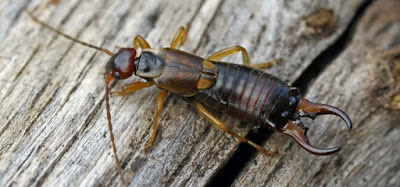
SOME FACTS ABOUT THE EARWIG
G'day folks,
Welcome to some background on these pesty little creatures.
The earwig is a small sized insectthat is found in a variety of habitatsaround the world. There are nearly 2,000 different speciesof earwig that are found throughout the American, Australian and Eurasian continents.
The earwig has a small body size, that is split into three parts in a similar way to numerous other insectspecies. The earwig has sharp pincers on its abdomen and large wings that generally remain concealed against the body of the earwig. Although earwigs are able to fly, they often don't.
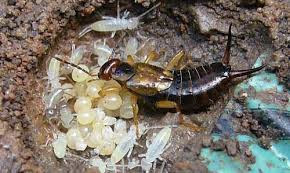
Earwigs are nocturnalanimalsthat often hide in small, moist crevices during the day, and are active at night. Damage to foliage, flowers, and various crops are commonly blamed on earwigs but they also eat certain insectsthat damage them.
The earwig is thought to get its name from people fearing that earwigs crawled into your ear to lay their eggs. Although this is not the sole intention of the earwig, it is certainly thought to be possible as they like narrow, warm spaces such as the ear canal.
The earwig is an omnivorous animalmeaning that earwigs will eat almost anything they can find. Earwigs spend most of their time feeding on a wide variety of other insectsand plants including flowers, fruits and leaves.

Due to their small size, earwigs have a number of natural predatorswherever they live in the world. Amphibians such as frogs, newtsand toads are among the most common predatorsof the earwig along with birdsand other larger insectssuch as beetles.

Female earwigs lay up to 80 small eggs which hatch within a couple of weeks. Female earwigs are known to be extremely protective of their young, often watching over them until they have reached their second moult(earwigs moult5 times over the course of their lifetime).

Clancy's comment: Mm ... Those pincers look fairly wild.
I'm ....
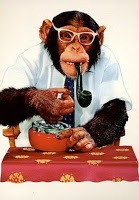

Published on March 11, 2018 14:25
March 10, 2018
11 March 2018 - JAMIE FOXX - - MULTI - TALENTED
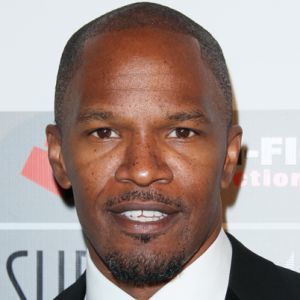
JAMIE FOXX
G'day folks,
A talented singer, comedian, and actor, Academy Award winner Jamie Foxx has proved to be a triple threat in the entertainment industry.
Who Is Jamie Foxx?
Born Eric Morlon Bishop on December 13, 1967, in Terrell, Texas, Jamie Foxx has emerged as one of the most diversely talented entertainers of his generation. Foxx started out landing a spot on TV's In Living Color in the early 1990s. He then proved himself as a dramatic actor, starring in Ray in 2004, a role that earned him an Academy Award. Two years later, Foxx impressed music fans with his hit collabration with Kanye West for the song "Gold Digger." More recently, he starred in Quentin Tarantino's western Django Unchained (2012).
Early Life
A talented singer, comedian, and actor, Academy Award-winner Jamie Foxx has proved to be a triple threat in the entertainment industry. After his parents' marriage dissolved, Foxx was adopted by his maternal grandparents when he was less than a year old. He enjoyed sports and music as a child, and attended Terrell High School in his hometown.
After receiving a scholarship, Foxx enrolled at the U.S. International University in San Diego where he majored in music. It was during college that he was encouraged by friends to take the open mike one night at a comedy club, and his career in entertainment began.

'In Living Color' Leaving college, Foxx moved to Los Angeles to pursue a career in comedy. In 1991, he was hired as a regular cast member on the Fox variety show In Living Color. Foxx also explored his interest in music during the 1990s, releasing the album Peep This in 1994. With its traditional, smooth R&B sound, the album reached as high as No. 12 on the R&B and hip-hop charts, its single "Infatuation" attracting attention from listeners and radio stations.
That same year, Foxx left In Living Color, but in 1996 he returned to television with The Jamie Foxx Show, playing a struggling Los Angeles actor who lives in a hotel owned by his aunt and uncle.

Big Screen Acclaim By the time his show ended in 2001, Foxx was beginning to be viewed as a talented dramatic actor. This was due in large part to his performance in the sports drama Any Given Sunday (1999). Playing football star Willie Beamen, Foxx showed incredible range in his performance and held his own against one of film's greats, Al Pacino. His next notable film role was in Michael Mann's Ali, followed by two powerful performances in 2004: opposite Tom Cruise in the thriller Collateral and starring in the eagerly anticipated biopic Ray. Foxx earned both an Academy Award and a Golden Globe award for his authentic turn as Ray Charles.
Following Ray, Foxx took an interesting array of roles with mixed results. The military action film Stealth (2005), with Josh Lucas and Jessica Biel, was a critical and financial dud. That same year, he garnered some critical praise for his turn as a marine serving in the Middle East in Jarhead(2005), with Jake Gyllenhaal, but the movie failed to attract much of an audience.
Commercial Success as a Musician In 2006, Foxx released a new album, Unpredictable. The recording reached the top of the pop, R&B and hip-hop charts, driven by the title track single, "DJ Play a Love Song," and "Can I Take You Home." At the 2006 Black Entertainment Television Awards, Foxx won Best Duet/Collaboration with Kanye West for his work on the single "Gold Digger."
Foxx released his third album, Intuition, in 2008, which featured West and Lil Wayne, among others. The album's second single, "Blame It," hit No. 5 on the Billboard Hot 100 and No. 1 on the Billboard Hot R&B/Hip-Hop Songs chart.
Foxx enjoyed more success with his follow-up albums Best Night of My Life(2010) and Hollywood: A Story of a Dozen Roses (2015).

'Dreamgirls' After teaming up with Colin Farrell for Michael Mann's big screen adaptation of the popular 1980s cop show Miami Vice (2006), Foxx co-starred in Dreamgirls(2006), with Jennifer Hudson and Beyoncé. He played a scheming car saleman who becomes a manager for R&B star James Thunder Early (played by Eddie Murphy). His character then transforms Early's backup singers, the Dreamettes, into an all-female supergroup. The film is loosely based on the '60s pop group the Supremes.
Foxx featured prominently in The Kingdom (2007), a thriller about a terrorist attack on Americans in Saudi Arabia. In 2009, Foxx portrayed Nathaniel Ayers in the drama The Soloist, with Robert Downey Jr., and then starred in Law Abiding Citizen.
Returing to lighter fare, Foxx appeared in the 2010 romantic comedy Valentine's Day,with Jessica Biel and Jennifer Garner. He also had a supporting role in the workplace comedy Horrible Bosses (2011), starring Jason Bateman, Jennifer Aniston and Kevin Spacey, and lent his voice to the animated children's film Rio the following year.
'Django Unchained'
In late 2012, Foxx burst back onto the big screen with a leading role in Quentin Tarantino's action western Django Unchained. He starred as Django, a freed slave who teams up with a bounty hunter (Christoph Waltz) to find his wife (Kerry Washington) and face off against the plantation owner (Leonardo DiCaprio) who has her captive. The cast also included Samuel L. Jackson and Jonah Hill.
More recently Foxx appeared in the 2013 action film White House Down, playing the role of President Sawyer. In 2014, he starred as the villain Electro in The Amazing Spider-Man 2, reprised his character of Nico for Rio 2 and took on the role of the Daddy Warbucks-like William Stacks for a remake of Annie.
Following this busy year, Foxx took a break from film, before resurfacing in 2017 with the crime films Sleepless and Baby Driver.
 Clancy's comment: A successful man with more than one string to his bow.
Clancy's comment: A successful man with more than one string to his bow. I'm ...

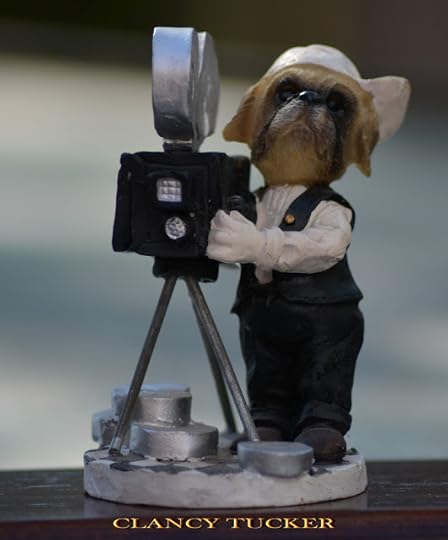
Published on March 10, 2018 12:35
March 9, 2018
10 March 2018 - WHAT HAPPENED TODAY IN HISTORY

WHAT HAPPENED TODAY IN HISTORY
G'day folks,
Welcome to some facts on what happened on this day in history.
On this day in 1959, Tibetans band together in revolt, surrounding the summer palace of the Dalai Lama in defiance of Chinese occupation forces.
China’s occupation of Tibet began nearly a decade before, in October 1950, when troops from its People’s Liberation Army (PLA) invaded the country, barely one year after the Communists gained full control of mainland China. The Tibetan government gave into Chinese pressure the following year, signing a treaty that ensured the power of His Holiness the Dalai Lama, the country’s spiritual leader, over Tibet’s domestic affairs. Resistance to the Chinese occupation built steadily over the next several years, including a revolt in several areas of eastern Tibet in 1956. By December 1958, rebellion was simmering in Lhasa, the capital, and the PLA command threatened to bomb the city if order was not maintained.

The March 1959 uprising in Lhasa was triggered by fears of a plot to kidnap the Dalai Lama and take him to Beijing. When Chinese military officers invited His Holiness to visit the PLA headquarters for a theatrical performance and official tea, he was told he must come alone, and that no Tibetan military bodyguards or personnel would be allowed past the edges of the military camp. On March 10, 300,000 loyal Tibetans surrounded Norbulinka Palace, preventing the Dalai Lama from accepting the PLA’s invitation. By March 17, Chinese artillery was aimed at the palace, and the Dalai Lama was evacuated to neighboring India.
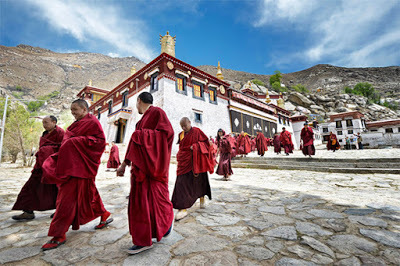
Fighting broke out in Lhasa two days later, with Tibetan rebels hopelessly outnumbered and outgunned. Early on March 21, the Chinese began shelling Norbulinka, slaughtering tens of thousands of men, women and children still camped outside. In the aftermath, the PLA cracked down on Tibetan resistance, executing the Dalai Lama’s guards and destroying Lhasa’s major monasteries along with thousands of their inhabitants.

China’s stranglehold on Tibet and its brutal suppression of separatist activity has continued in the decades following the unsuccessful uprising. Tens of thousands of Tibetans followed their leader to India, where the Dalai Lama has long maintained a government-in-exile in the foothills of the Himalayas.
Not only but also, these events happened …
American Revolution1792 The Right Honourable John Stuart, 3rd earl of Bute, dies Automotive1927 Inventor who won suits against auto giants is born Civil War1865 William H. C. Whiting dies Cold War1948 Strange death of Jan Masaryk Crime1993 Dr. David Gunn is murdered by anti-abortion activist Disaster1906 Mine explosion kills 1,060 in France General Interest1876 Speech transmitted by telephone 1945 The Firebombing of Tokyo continues 1969 Ray pleads guilty to King assassination Hollywood1997 The WB premieres its first hit show Literary1926 First Book-of-the-Month Club selection is published Music1988 Disco sensation Andy Gibb dies at the age of 30 Old West1864 Montana vigilantes hang Jack Slade Presidential1864 Lincoln signs Ulysses S. Grant’s commission to command the U.S. Army Sports2006 Cuba plays in World Baseball Classic Vietnam War1970 Army captain charged with My Lai war crimes 1975 Communists surround Ban Me Thuot World War I1917 Turkish troops begin evacuation of Baghdad World War II1940 Sumner Welles makes a “peace proposal”
 Clancy's comment: Always good to reflect on history, not that we ever seem to learn any lessons from it.
Clancy's comment: Always good to reflect on history, not that we ever seem to learn any lessons from it.I'm ...

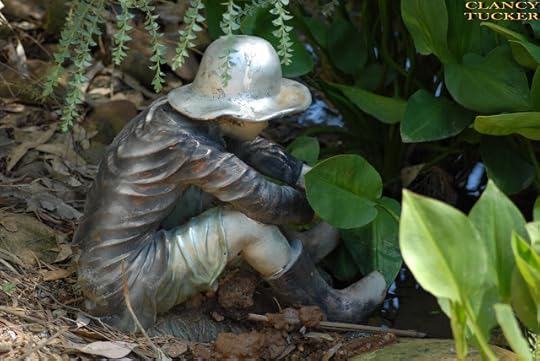
Published on March 09, 2018 12:36
March 8, 2018
9 March 2018 - THE AMAZING EMPEROR PENGUIN
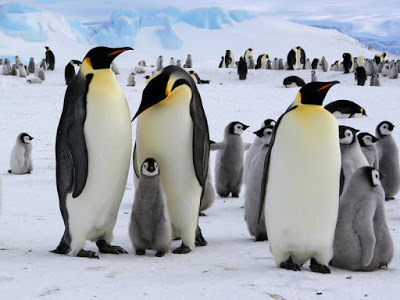
THE AMAZING EMPEROR PENGUIN
G'day folks,
Welcome to some background information on a beautiful creature.
Emperor PenguinClassification and Evolution
The Emperor Penguinis found on and around the Antarctic continent and is not just the largest speciesof penguinin the world but also one of the most unique. Instead of breeding in the warmer summer months like other penguinspecies, Emperor Penguinslay and incubate their eggs during the coldest time of year in the coldest place on Earth. Emperor Penguinsare flightless birdsthat have small, stiff wings that help them to flythrough the water, rather than through the air. Despite having been first recorded by Captain Cook on his second voyage in the late 1700s, the first Emperor Penguincolonywasn't discovered until 1902 with their extreme southerly-dwelling nature leading to new colonies still being recorded as late as 1986. Due to the fact that Emperor Penguinsbreed on the ice, they are thought to be one of the only speciesof birdthat could spend their whole life without actually walking on land.
Emperor PenguinAnatomyand Appearance
The Emperor Penguinis a large birdthat stands up to more than a meter in height. Their feathers vary in colourfrom black on the back to white on the front with a yellow patch towards the neck. The black and white colouration is thought to be particularly important for camouflaging the Emperor Penguinfrom predatorswhilst in the ocean. They also have yellow ear-spots and a orange-yellow strip that runs the length of their black beak, which is relatively small in sizeto retain heat. Their black, clawed feet are also webbed to help them when swimming but provide little assistance when walking about on land (instead Emperor Penguinsslide along on their belly). In orderto keep themselves warm in such hostile conditions, they have a triple layer of dense, oily and waterproof feathers and a thick layer of blubber under their skin. They are also well adapted for swimming with their streamlined bodies gliding through the water, propelled by their small, rigid wings.
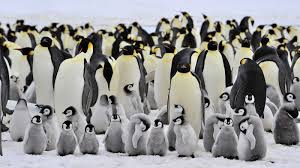
Emperor PenguinDistribution and Habitat
Emperor Penguinsare found in the deep south, inhabiting the compacted ice on the Antarctic continent and along the coast. Coming onto land to breed, they can travel distances of up to 200km across the ice to reach their breeding colonybefore returning to the open oceanto feed. Unlike a number of other penguinspeciesthat may visit the Antarctic continent from time to time, the Emperor Penguindoes not migrate north and instead spends the whole year deep in the Southern Ocean. In fact, only two of the forty known Emperor Penguincolonies breed on ice that is not attached to the Antarctic mainland. Emperor Penguinshowever, are being increasingly affected by habitatloss in the form of global warming that not just reduces the amount of pack ice surrounding the continent but also causes it to melt earlier in the year.
Emperor PenguinBehaviourand Lifestyle
Emperor Penguinsare incredibly sociable birdsthat live together in colonies that can contain thousands of individuals. Once having found a mate, Emperor Penguinsremain faithful to one another for life and use vocal calls to find each other again when they return to the breeding site. They are excellent swimmers that are also known to leap out of the water when they are travelling at speed in the same way as dolphins. Known as "porpoising" it allows the Emperor Penguinto breathe but without having to slow down. They are also known to dive to depths of more than 500 meters making them the deepest diving birdsin the world, where they are able to hold there breath for up to 20 minutes at a time. Usually travelling at speeds of between 5 and 10 kph but capable of swimming at 24 kph, Emperor Penguinscan travel as far as 1,000km on a foraging trip.
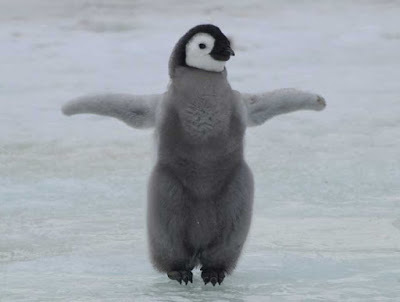
Emperor PenguinReproductionand Life Cycles
Emperor Penguinsbreed every year in the winter months which are the coldest, darkest and most hostile months of the Antarctic year. They begin arriving in their breeding colonies that can be many miles from the oceanbetween March and April and once having found their mate, the females lay a single egg from May to June. The egg is quickly transferred to the male who rests it on his feet to stop it from touching the frozen ground, and covers it with a warm brood pouch that keeps the egg warm. Female Emperor Penguinsthen leave for the open oceanwhere they forage for food for two whole months, leaving the males to look after the eggs during the winter months.
Temperatures can reach -60 degrees centigrade and with winds of up to 100 mph the male Emperor Penguinshuddle together for warmth, alternating between the outskirts and the middle to ensure all members of the colonyget to keep warm. The eggs hatch after 70 days in the spring which coincides with the return of the females who feed the young and keep them warm using their brood pouch on their tummies, while the males head off to find food. Once having eaten, the males return to help care for the chick which grows rapidly and has developed its adult feathers by December when the ice is melting and the oceanis then closer to the breeding grounds.

Emperor PenguinDietand Prey
The Emperor Penguinis a carnivorous animalthat only hunts and eats animalsin the surrounding water in orderto survive. Fishand krill make up the bulk of their dietalong with squidand crustaceans. Like other penguinspecies, Emperor Penguinshave a rough and spiky tongue which helps them when trying to eat slippery fish. Emperor Penguinchicks are not big enough or strong enough to hunt until the ice melts in the summer and so rely on their parents to collect food for them. Males and females take it in turns to leave the chick and head out to the sea to hunt for food before returning and feeding the fast-growing chick by regurgitating a fishy paste from their stomach in the chick's mouth. Whilst incubating their egg throughout the winter, male Emperor Penguinseat nothing at all and can lose up to half of their body weightby the time the chick has hatched two months later.

Emperor PenguinPredatorsand Threats
Emperor Penguinsare preyed upon by a number of large, marine carnivoresbut their exact predatorsdo vary between geographic locations. However, despite inhabiting the most southerly and hostile land mass on the planet, Emperor Penguinchicks are still vulnerableand are preyed upon by the enormous Southern Giant Petrel which is an animalthat is thought to be responsible for more than 30% of deaths in Emperor Penguinchicks. Adult Emperor Penguinsare preyed upon by Leopard Seals and Killer Whales, both of which also take young Emperor Penguinsthat are only just learning how to swim. Emperor Penguinsare also threatenedby the decreasing amount of pack ice which is caused by global warming and are sometimes also caught in the nets of large, commercial fishing vessels.
Emperor PenguinInteresting Facts and Features
When arriving back at their breeding grounds after having been feeding in the oceanfor the past few months, male and female partners find one another using different vocal calls. It is thought that the frequency differs between them to make it easier for them to locate one another. The same also applies with parents and chicks when reuniting after a fishing trip. Despite the fact that Emperor Penguinchicks grow remarkably quickly, they are not able to accompany their parents into the water until between November and December and instead gather together with other chicks in small groupsto keep warm. They are not just faced with a long walk out to the open oceanuntil the ice melts further, but they must also wait until they have developed their adult feathers which are dense and oily to keep the young Emperor Penguinboth warm and waterproof.

Emperor PenguinRelationship with Humans
Ever since explorers first started really venturing into the very south of the Southern Ocean and onto the Antarctic continent, they have been fascinated by penguins. In the early 20th century, scientists widely believed that Emperor Penguinswere some kind of evolutionary "missing link" and although this theory has dissolved somewhat since then, they are still thought to have evolved from some of the first and most primitive birdspecieson the planet. Emperor Penguinshave been increasingly studied as improved technology has enabled more and more people to visit them in their natural habitat. They have also been hunted and eaten by people in the past.

Emperor PenguinConservation Status and Life Today
Today, the Emperor Penguinis listed by the IUCN as a speciesthat is of Least Concern from becoming extinctin the wild in the near future. In fact, their southerly-dwelling nature may mean that they are the least vulnerableof the eighteen different speciesof penguin. There are thought to be around 200,000 breeding pairs of Emperor Penguinin the Southern Ocean and although populations remain healthy and relatively stable, they are being increasingly affected by the rapidly melting ice and the higher levels of humanactivity around Antarctica.

Clancy's comment: Not long ago I watched a documentary about these creatures, produced by David Attenborough. Extraordinary! So, if you have an opportunity to watch it, do it. Gob smacking viewing.
I'm ...


Published on March 08, 2018 12:37
March 7, 2018
8 March 2018 - STUNNING PHOTOGRAPHY
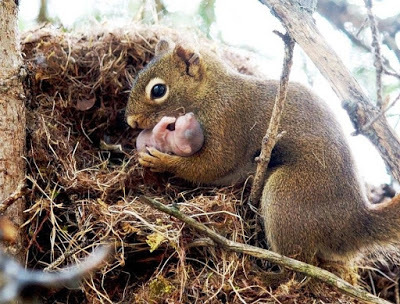
STUNNING PHOTOGRAPHY
G'day folks,
Welcome to some top photography, taken by talented photographers.





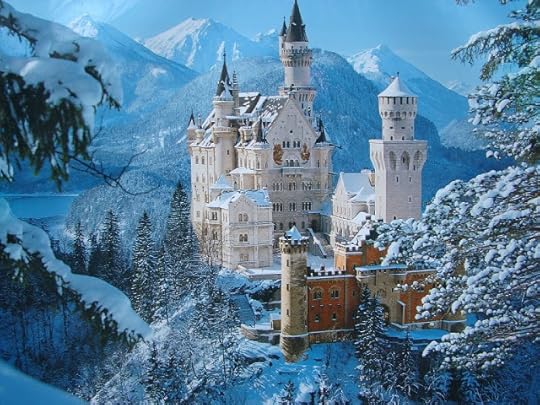
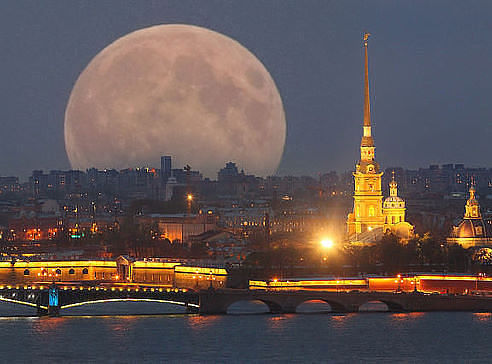



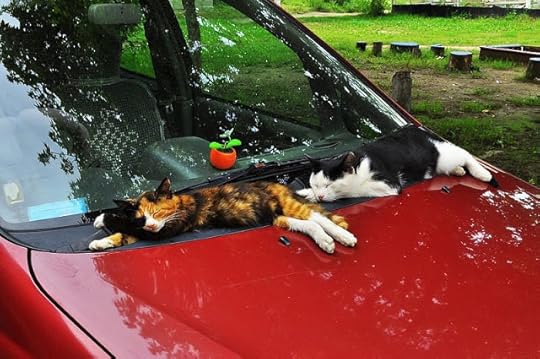
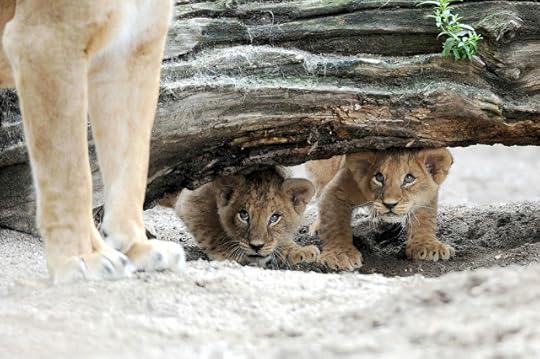




Clancy's comment: Yep, all about timing ... And pressing the button.
I'm ...

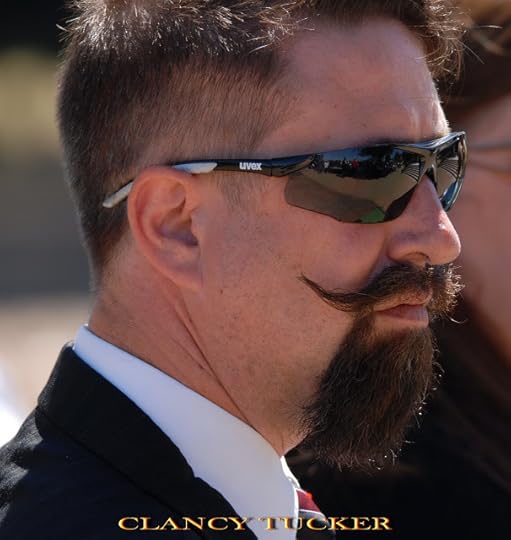
Published on March 07, 2018 12:33
March 6, 2018
7 March 2018 - SECRET FOUND IN PARIS METRO

SECRET FOUND IN PARIS METRO
G'day folks,
Yep, you guessed it. Some more fine art has been found in Paris.

W hen your walls start to look outdated, there’s always the option of just painting over them, which is a little bit like what the Parisian metro has done over the years to update its stations. When the old white tiling of yesteryear needed a revamp, they simply covered them up with more modern materials. A quick and easy fix, it didn’t require even removing the old posters and advertisements pasted along the platforms. So when present day metro workers went in last week to begin preliminary renovations and strip back the walls of the Trinité station in the 9th arrondissement, they uncovered a layer of the city’s history lost in time.

Public transport schedules dated June 20th, 1959, household advertisements, vintage city maps, concert promotions and even a record of criminal convictions that took place within the metro network– a time capsule of mid-century poster design was unveiled, forgotten behind the walls since they had been entombed during renovation work in 1960 for a city-wide initiative to modernise the stations after the war.

For a brief moment, metro passengers disembarking from their trains onto the platforms of the Trinité station last week, were plunged into the past as the carriage doors swung open.

Parisian commuter Yan Covès was quick to snap the uncovered peeling artworks, knowing that within a few days, they would be sealed over once more. Nevertheless, Trinité is one of many stations scheduled to undergo preparations for big renovation works starting in October.

A welcome distraction from the routine of the daily commute and a rare glimpse into the urban environment of commuters 50 years before us, this might just give Parisians a new reason to enjoy riding the metro. Surely it’s a sight worth being late to work for.
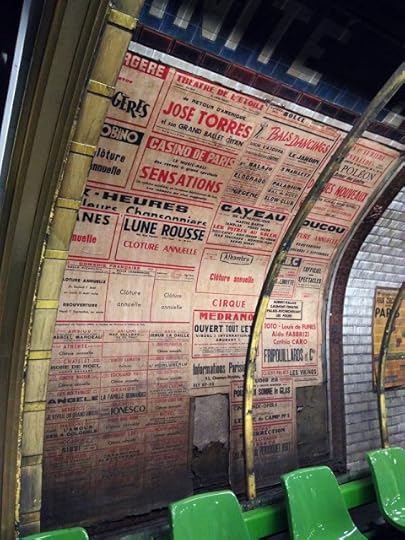





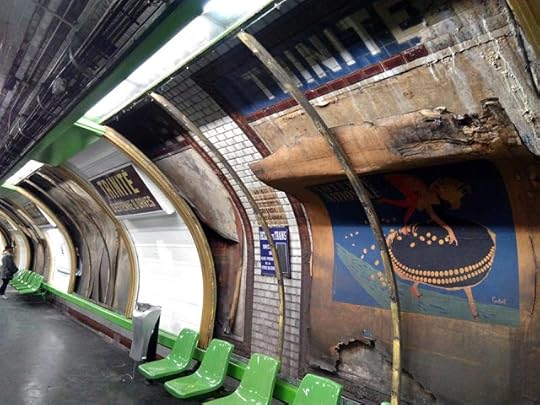

Clancy's comment: What next will they discover?
I'm ...


Published on March 06, 2018 11:46



